Spring Works, aka Branding
Host: Mescalero Apache Cattle Growers, New Mexico, USA
Written by Ruth Wold, Managers Assistant
This is part three in a 5-part series about managing a Native American Reservation ranch. Find part one here and part two here.
As I write this, spring and branding seems a far cry away. Our winters are usually cold, snowy and these are the times that I want to hide in house, snuggled up by the warmth of a fire in the wood stove. I look forward to the days that I can open up the windows and air out the house, letting the stuffiness of the winter months seep out. After a winter of 30 and 40-degree high temps (0-4 celsius), the first day that it hits the 50s (10 celsius) tends to be the day the windows come open for a few hours. This winter has been warm, we haven’t had much more than 20 days below freezing and we never did get a good ground freeze. I do find it strange to be writing about spring coming when I feel like fall hasn’t ever left us this year.
 Cal and Cord playing in the snow, 2015.
Cal and Cord playing in the snow, 2015.
 Dusty and Grant venturing out in the snow, 2015.
Dusty and Grant venturing out in the snow, 2015.
 Breaking ice, winter 2015.
Breaking ice, winter 2015.
While this winter has been unusually warm, our grazing plan has stayed the same. Our cattle winter and calve in the lower elevations of the ranch. Our cows are bred in to calve starting with the first calf-heifers in February and the rest of the herd starts in March. We start gathering our cattle in May. By this time, most of the older, more experienced cows are headed towards the mountain pasture in search of fresh, green grass. After the winter of dry grass, cow cake, and mineral blocks, they are ready for the good stuff.
 The crew bringing bulls into Cow Camp 1 to turn out on the cows for breeding.
The crew bringing bulls into Cow Camp 1 to turn out on the cows for breeding.
This makes gathering a bit easier. Even though a few of them are ready to head up to the mountains, some of them are reluctant to come into the chaos of the corrals. While we normally run 8 full time cowboys, we add to that number in May for our Spring Works. We usually add 2-3 more cowboys. We also try to hire a few young teenagers for the summer to give them some work experience and we like having a few younger hands to help. It is always interesting to watch these young men start out, so full of freshness and energy, and false confidence. By the end of June, they tend to look a lot more humbled.
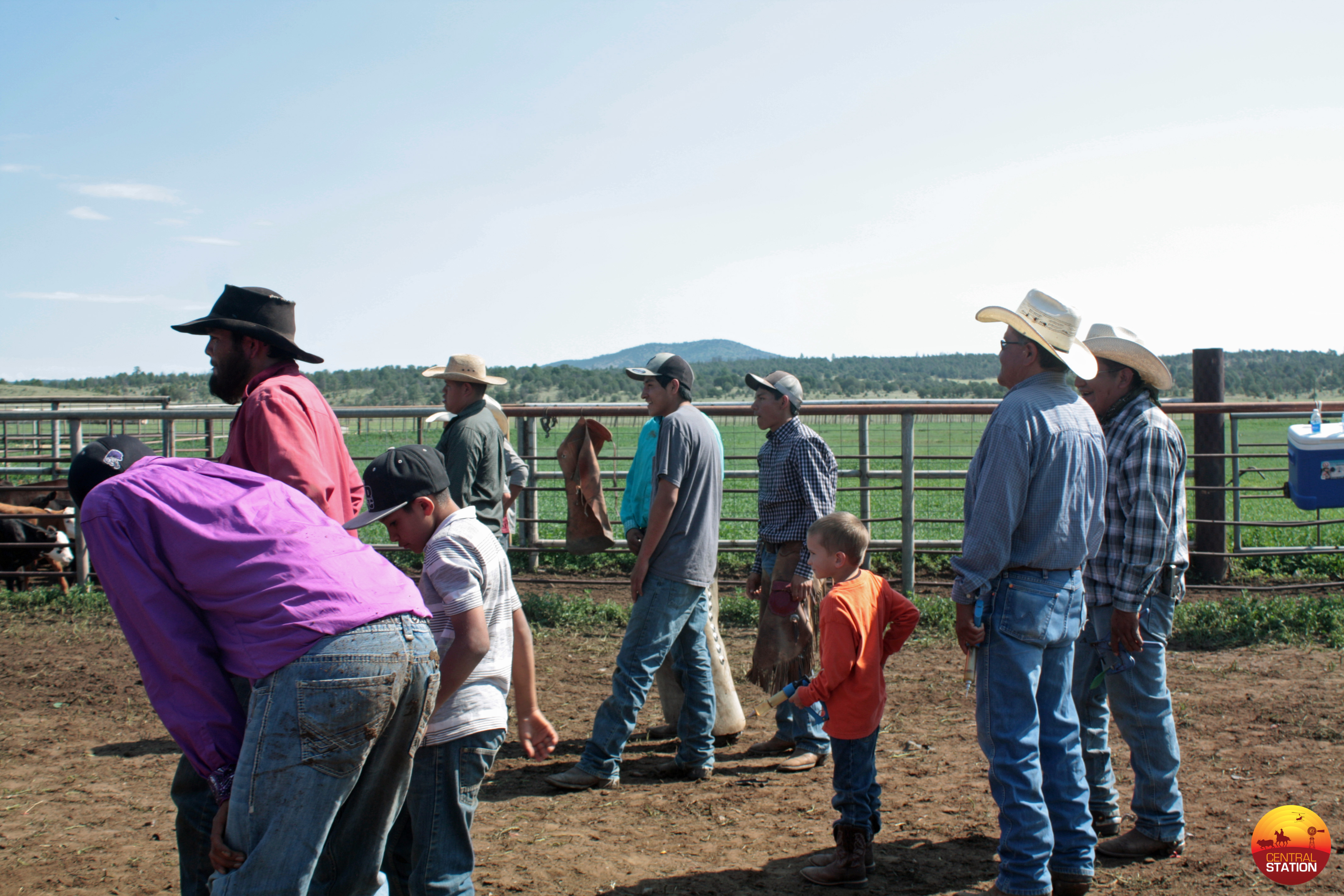 Waiting on calves to brand.
Waiting on calves to brand.
We currently gather all the pastures on horseback. We usually spend two to three days per pasture bringing them out of the larger, further pastures and moving them into the pastures closer to the corrals. We have holding pastures, called “traps” here, that we hold these cattle in for short periods of time.
There is an excitement that comes with the first day of Branding. We start early, around 5 AM, all the cowboys are fresh and ready for the day. I am usually am not out horseback with the cowboys. I start my day making a large commercial size pot of coffee, making cinnamon rolls, sometimes homemade, sometimes frozen. I also get snacks like fruit, granola bars, and other easy-to-eat snacks ready to take to the corral. While I am getting these ready, the crew is out bringing the cattle into the corral and sorting, separating the cows from the calves. Others will be getting the vaccines out from the refrigerators and into ice chests and begin mixing a few bottles.
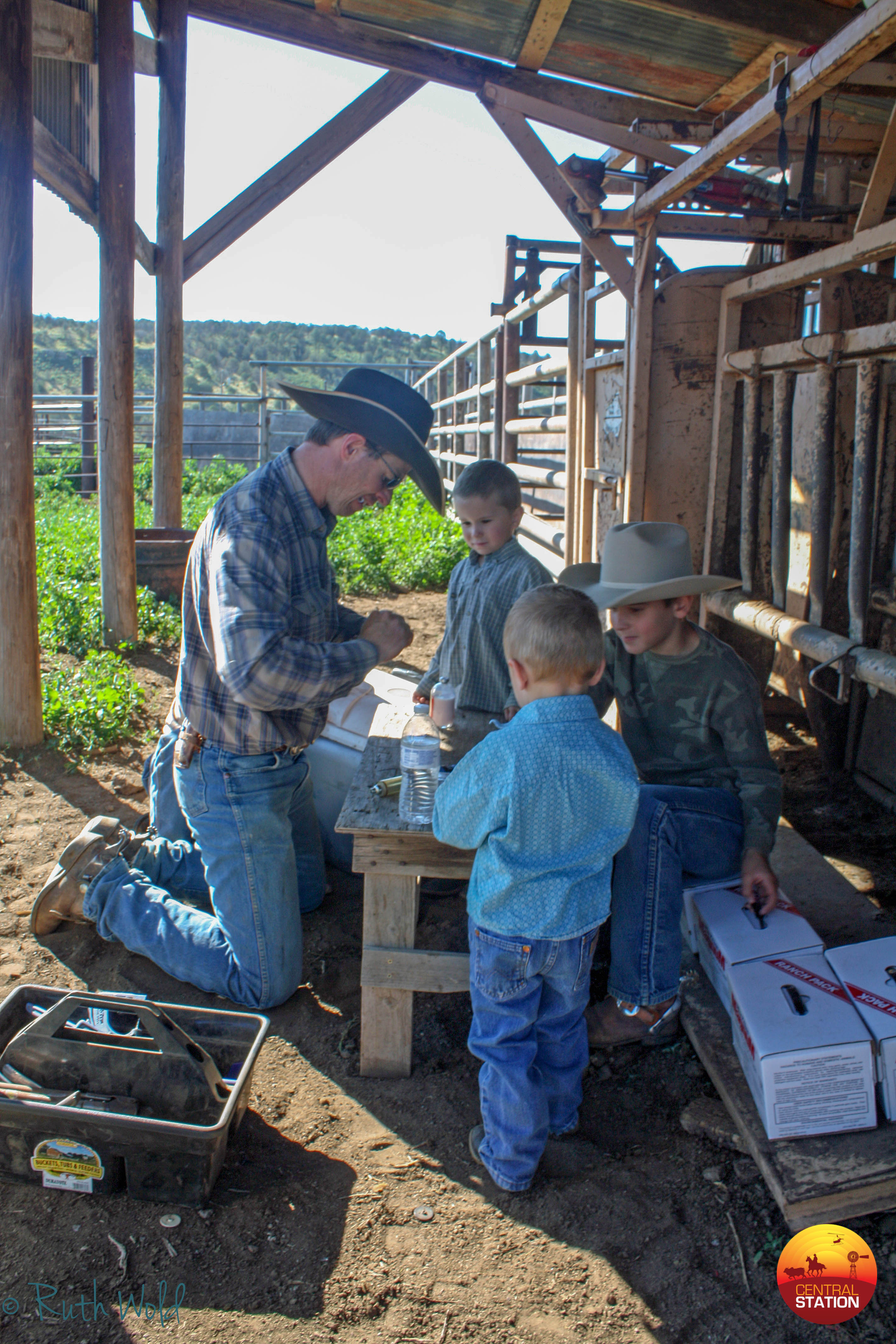
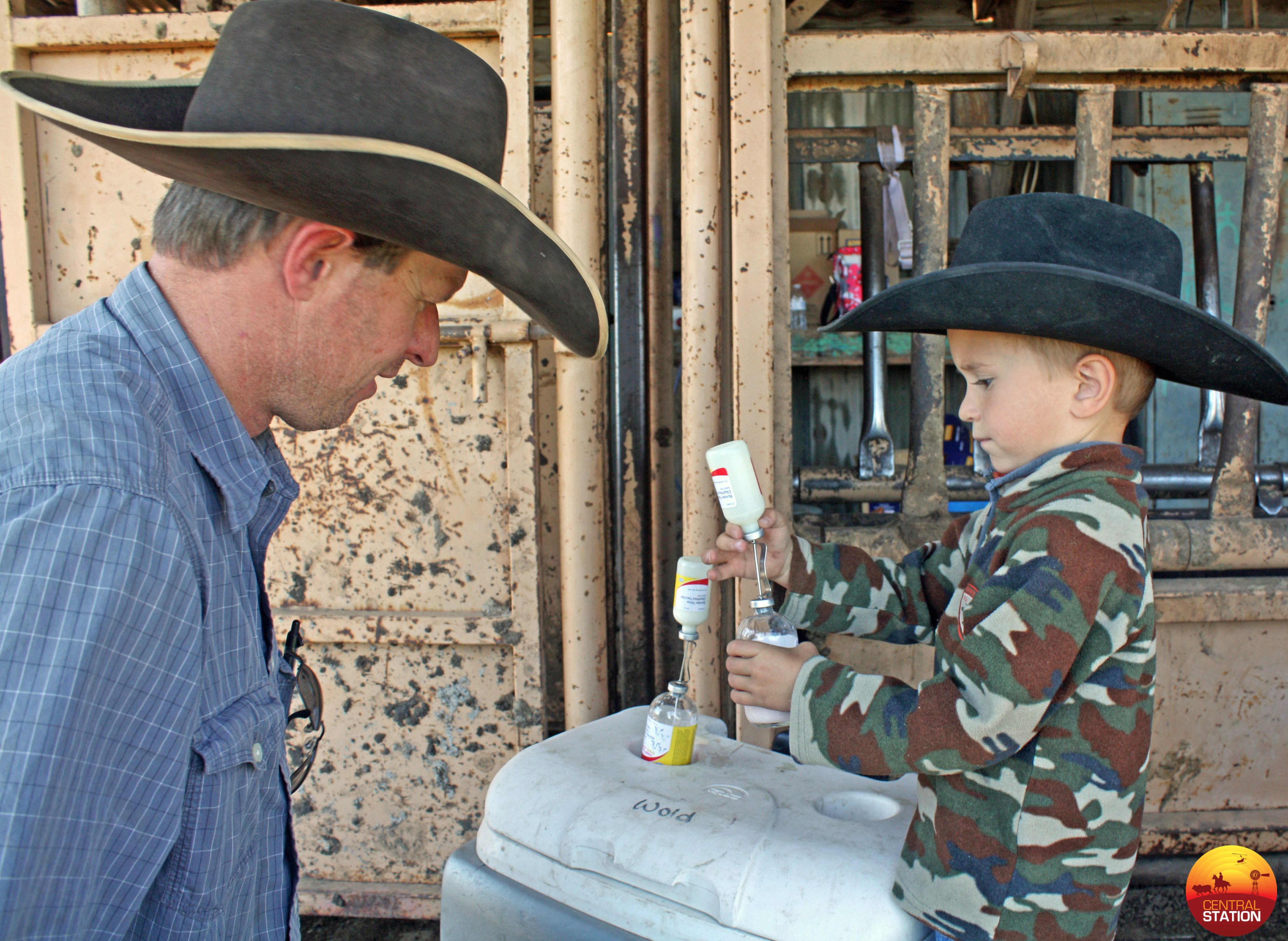 Helping daddy mix vaccines.
Helping daddy mix vaccines.
Depending on how the day is going, this can take until 9 or 10 AM, we will then break for coffee and cinnamon rolls. We will get started with the actual branding sometime around 10:30 or so.
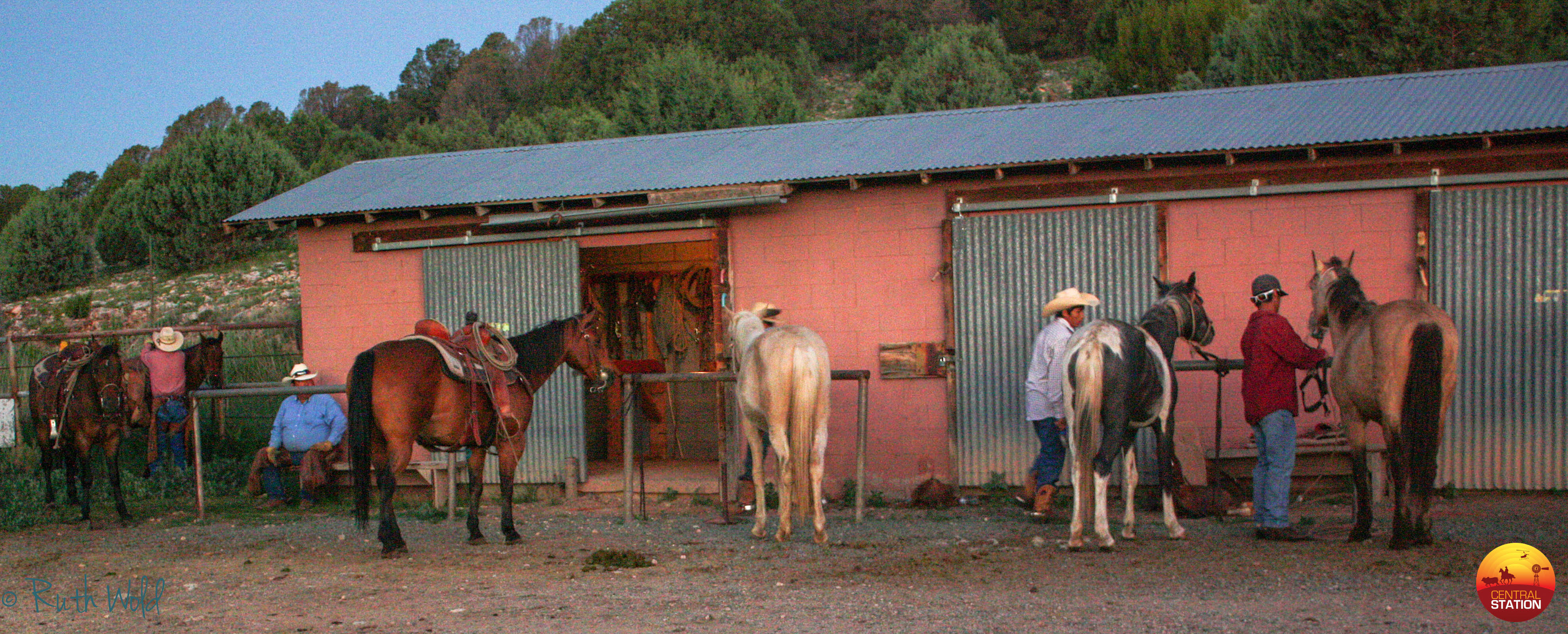 The crew at the Saddle House in the early morning.
The crew at the Saddle House in the early morning.
We brand our cattle with hot iron brands. Our brand is called the Bow and Arrow A and it is placed on the left shoulder of the calves.
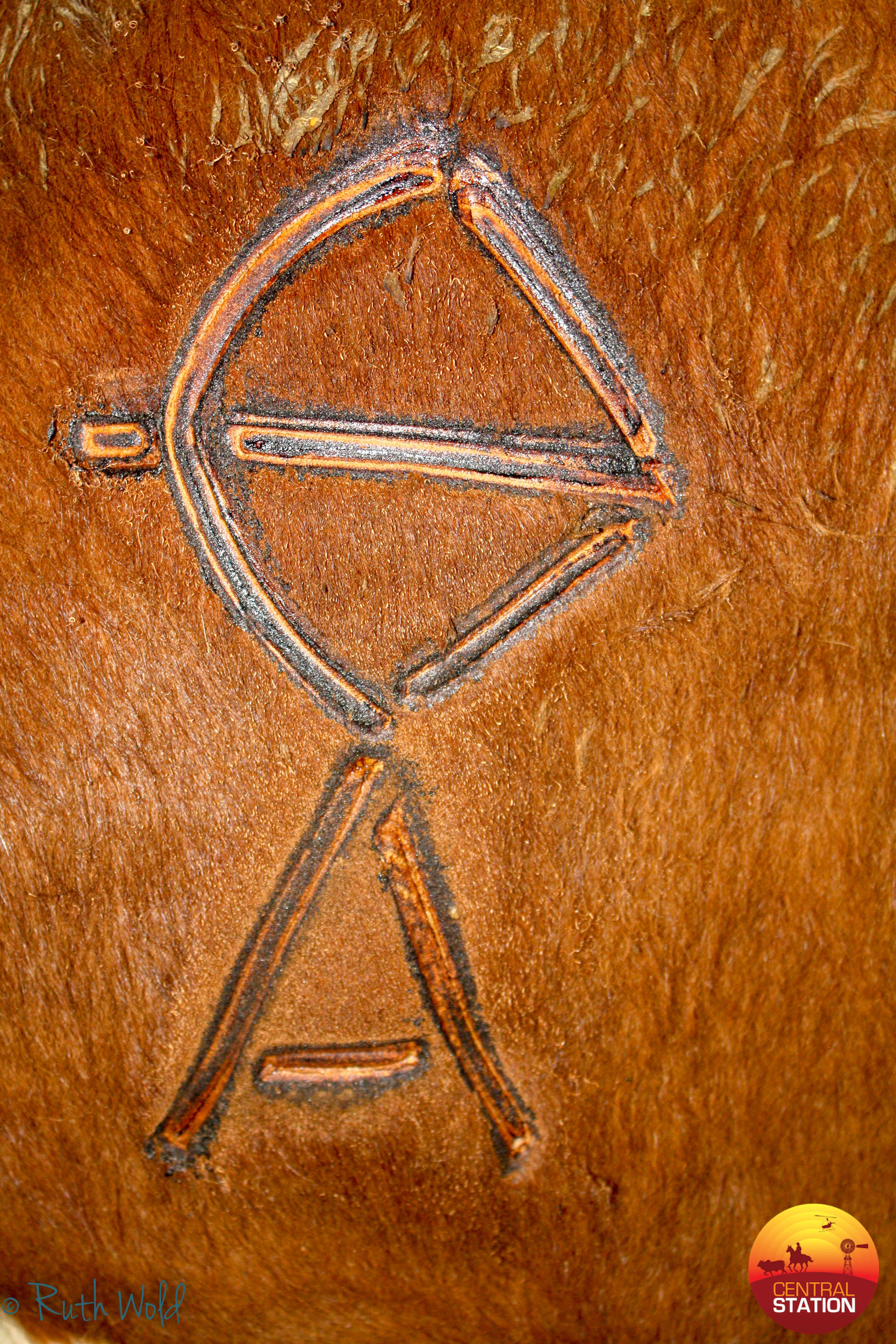 The Bow and Arrow A.
The Bow and Arrow A.
In New Mexico, all calves are required to be branded with a state registered brand. The irons are warmed in a “branding pot”, a propane-fueled cylinder that has a hole cut into it where the irons themselves are placed. One end of the pot is closed, while on the other end, the propane torch is inserted and held. This little, around 2 feet long, pot puts off a lot of heat and a dull roaring noise. Calves will also be vaccinated with Seven Way with Somnus and CattleMaster 5 at branding. Calves are also given an insecticide tag. Bull calves are castrated and both heifers and newly made steers have their ears notched accordingly. Heifers are notched in their left ears and steers on the right. Their tags will go in the opposite ears. In the pen, calves are roped low around the hind legs, preferably by two legs, and pulled over to the ground crew. One cowboy is the flanker, a good flanker is an amazing thing to watch. They make it look easy, the good ones. The flanker approaches roped calf on the opposite side that they want the calf to fall. In one fluid motion, he grabs the tail and pulls the calf onto its side. As the calf goes down, the flanker grabs the top front leg, using his body weight to hold the calf to the ground, he holds the calf secure as the roper pulls the rope taunt and holds the calf safely immobile.
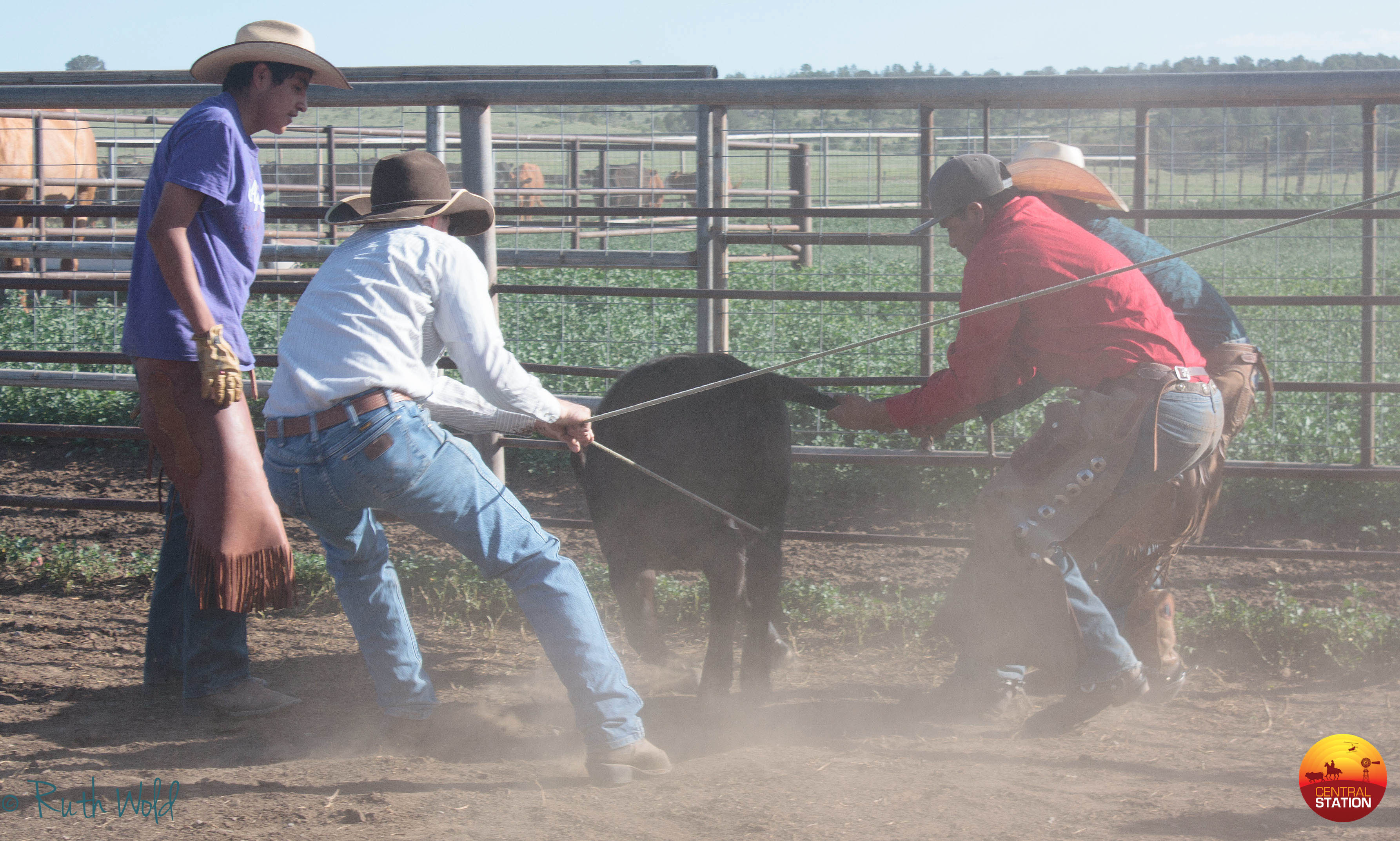
The other option is that another cowboy comes in and holds one back leg and uses leverage against the other one. This whole process, done by experienced cowboys, takes under a minute and is amazing to watch. The technique is key and even the smallest person can flank easily, if they know how. It is a physically demanding task, flanking calves, and is usually relegated to the young hands. The older cowboys oversee and complete the rest of the operation: the vaccinating, ear tagging, branding, or castrating. Most ranches everyone takes a turn at all the jobs, the ropers get a chance to rest their arms and all those who want to rope get a chance. Those of us less experienced hands stick to putting in ear tags or vaccinating. The castrators play a vital role, their skill isn’t to be discredited. A poor job castrating can be deadly. A good castrator is quick, efficient and clean. It is one of the last jobs that is taught in the branding pen. We don’t usually use any tools besides a good sharp knife and a castrator.
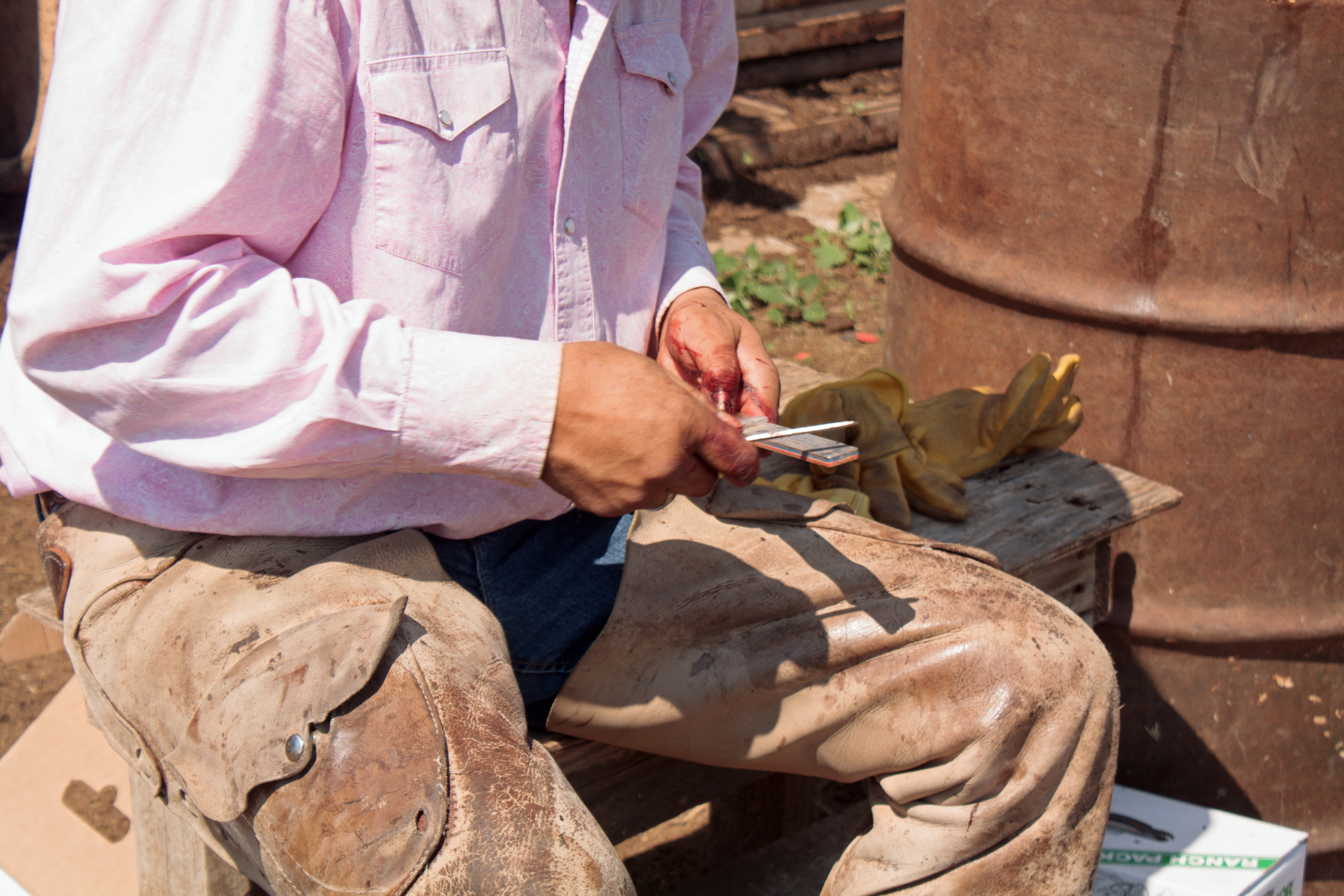
One of the favorite rites of passage is to try the branding delicacy, Mountain Oysters.
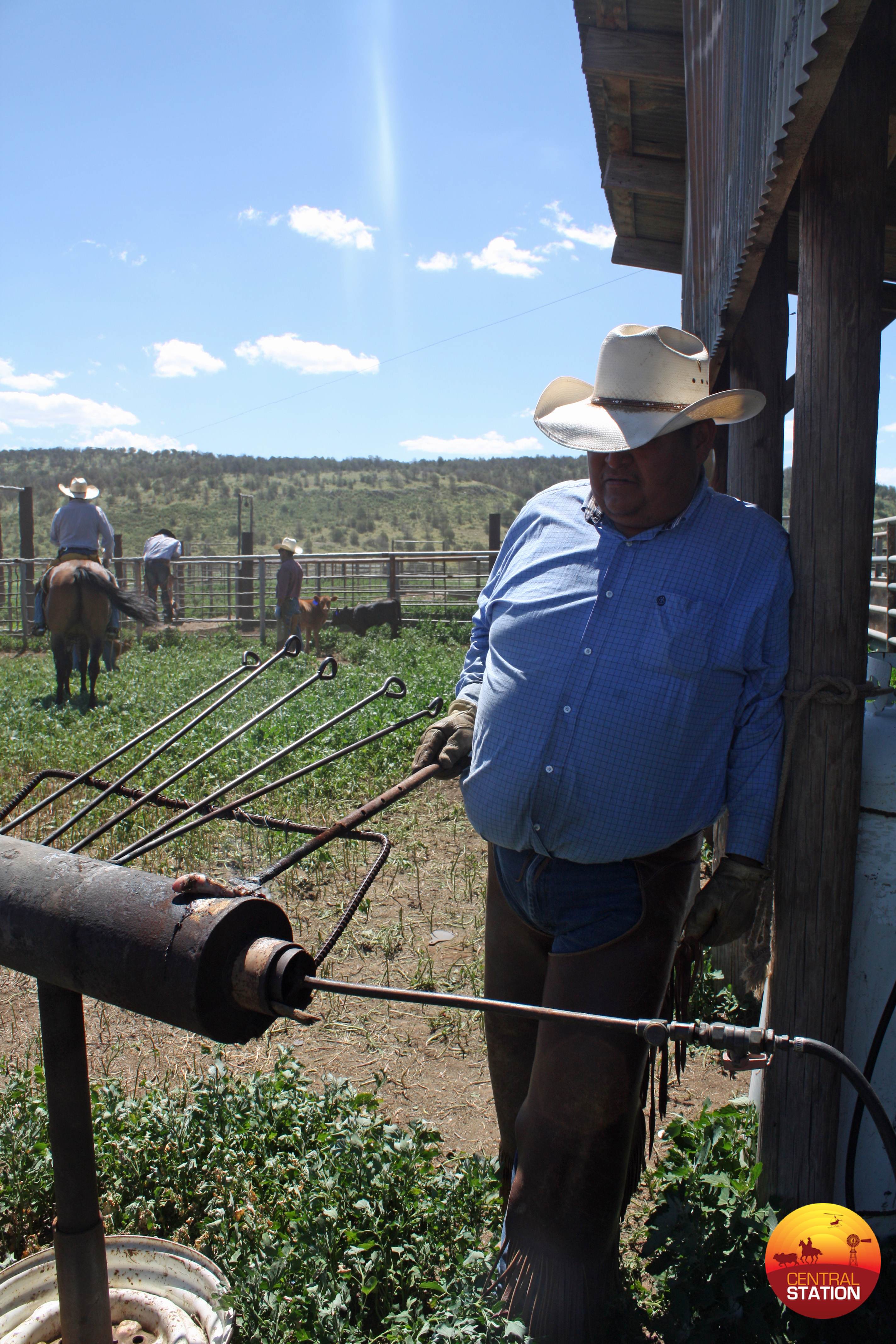

As our boys have gotten older, they have moved on from playing with empty nut sacks to really helping out at all ends.
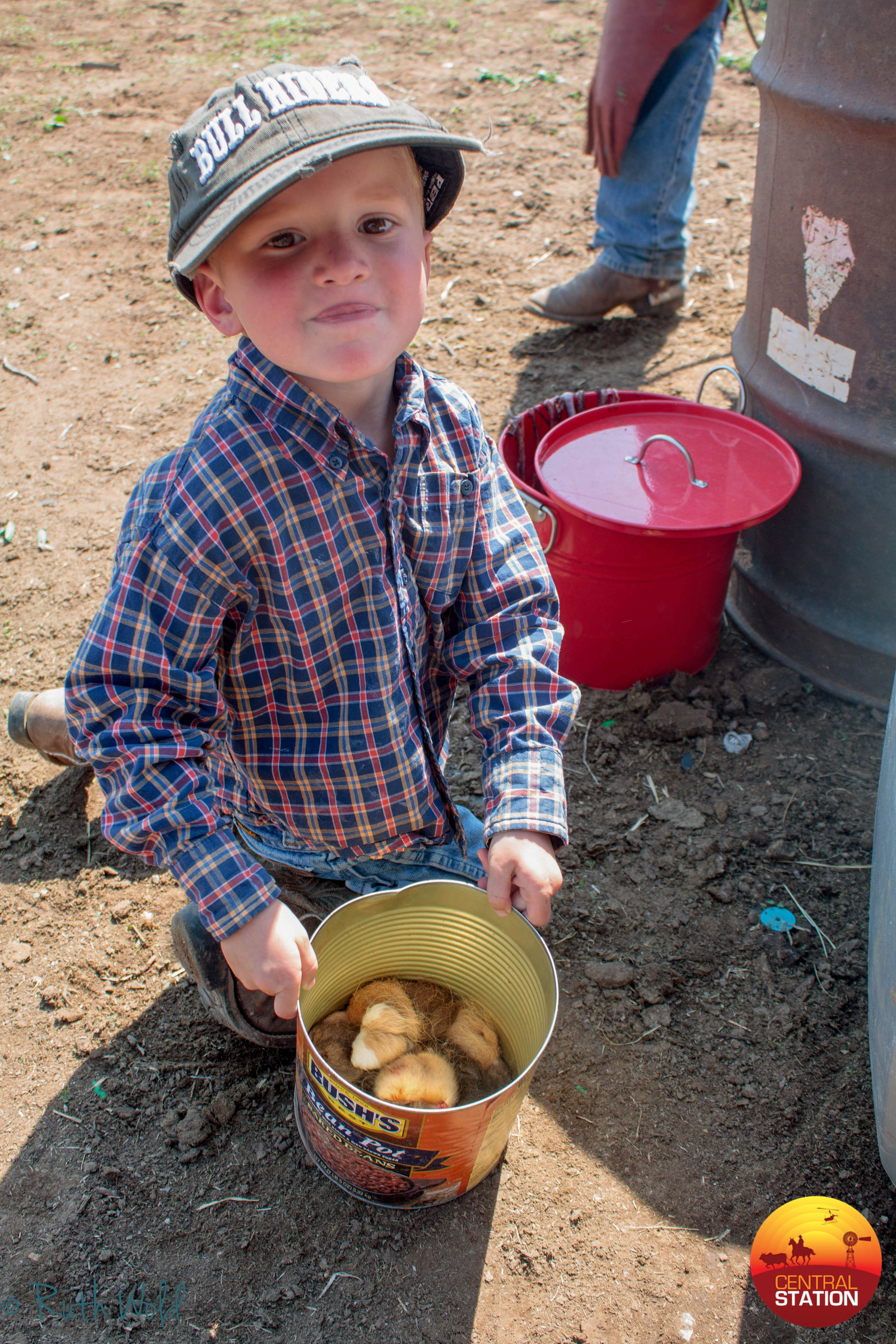
We will brand until all the calves are done, we don’t stop to eat until the calves are branded and the cows have been worked. We will take short breaks to hydrate and get quick snacks and cool down.

All cows are given pour-on insecticide before turning them out.
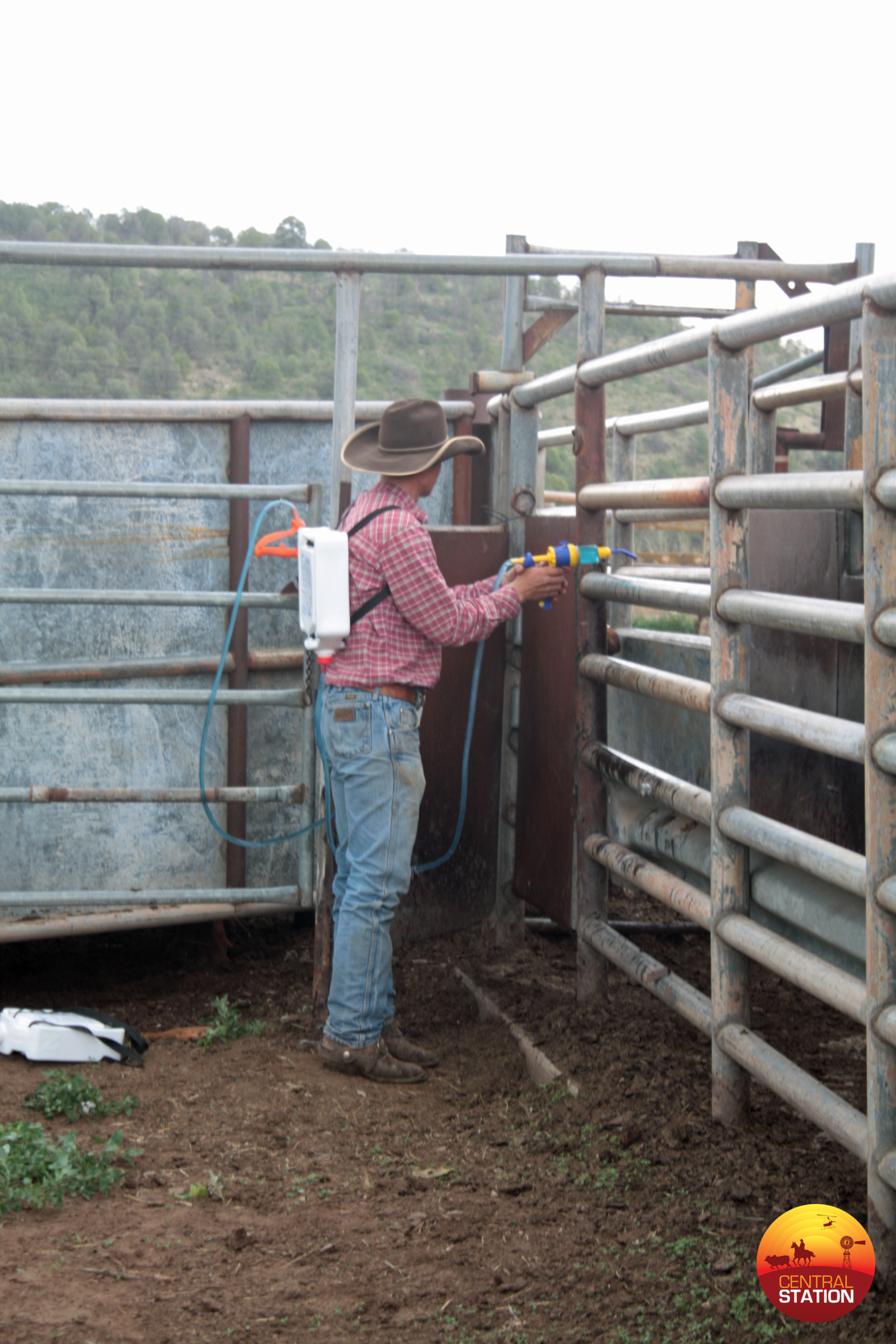
Then all the cows and calves are turned out over-night in a small trap close to the house to make sure they pair back up before turning them out into summer pastures.
